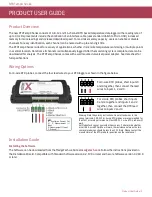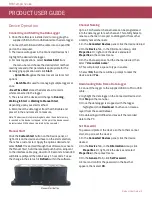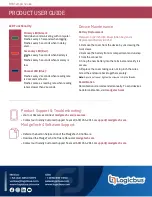
Product User Guide | 2
RTDTempX Series
PRODUCT USER GUIDE
Wiring Options
Product Overview
Installation Guide
For 4-wire RTD probes, connect the four lead wires to your RTD logger as shown in the figure below.
For 2-wire RTD probes, short inputs
3 and 4 together and inputs 1 and 2
together, then connect the RTD lead
wires to inputs 2 and 3.
For 3-wire RTD probes, short inputs 3
and 4 together, then connect the lead
wires to inputs 1, 2 and 3.
Installing the Software
The Software can be downloaded from the MadgeTech website at
. Follow the instructions provided in
the Installation Wizard. Compatible with Standard Software version 4.2.19.0 or later and Secure Software version 4.2.18.0
or later.
The new RTDTempX Series consists of 4, 8, 12 and 16-channel RTD based temperature data logger with a reading rate of
up to 4 Hz. Improvements include the elimination of an interface cable (uses standard USB-A to Micro USB), increased
memory for more readings and increased download speed. To maximize memory capacity, users can enable or disable
channels. For easy identification, each channel can be named with up to a ten digit title.
The RTDTempX Series is ideal for a variety of applications, whether it is remote temperature monitoring, or multiple points
in a central location. Data from all channels is simultaneously logged. After the monitoring cycle is complete, data can be
downloaded for analysis. The RTDTempX Series comes with a wall mounted universal power adapter. See data sheet for
full specifications.
KEY
4- Excitation Current Out
(+) 3- Measurement (+)
Input
2- Measurement(-) Input
1- Ground (-)
Warning: Note the polarity instructions. Do not attach wires to the
wrong terminals. 100
Ω
, 2 or 4 wire RTD probes are recommended for
the most accurate performance. Most 100
Ω
, 3 wire RTD probes will
work,
but MadgeTech cannot guarantee the accuracy. To determine whether
or not the 3-wire RTD probe will work, the resistance between the two
same colored wires should be less than 1
Ω
. (Note: Please contact the
manufacturer of the RTD probe for questions on the resistance.)






















